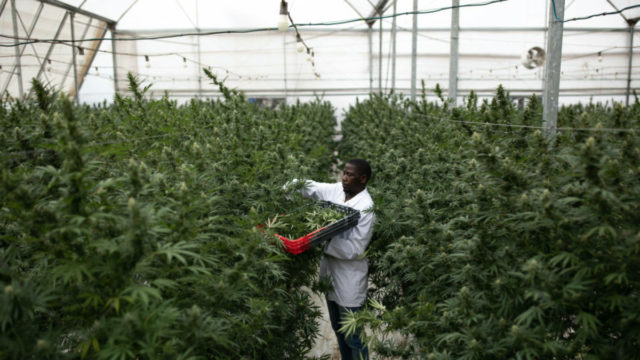For Australia’s cannabis sector, 2021 is looking even better than what it did a few months ago.
Cannabis companies fell during the COVID market crash in March, on top of a weak market in 2019.
Some also suffered from COVID-19 restrictions – and not just restrictions on people movements and falling consumer confidence.
Tommy Huppert, CEO of cultivator Cannatrek, told Stockhead moving freight was difficult in the early stages of COVID-19.
Given Australia’s cannabis sector heavily relies on imports, he didn’t mince his words.
“At one stage there were simply no flights so no medicine could arrive in the country, which was pretty scary,” Huppert declared.
Finishing the year on a high
In recent weeks, sentiment in Australia’s cannabis sector has improved thanks to two major developments.
First, the Therapeutic Goods Administration – Australia’s regulator – made an interim ruling to allow Australians to obtain low-dose cannabinoid (CBD) oils and pills from pharmacists.
Currently prospective patients need a formal prescription. That won’t be the case if the ruling becomes final.
Second, the US elections saw an endorsement of cannabis reform through the wave of support for Joe Biden, who has pledged to decriminalise recreational cannabis at a federal level.
Another five states individually voted to make cannabis legal, namely, New Jersey, Montana, South Dakota, Arizona and Mississippi – although the latter was only for medical cannabis.
This now means one-third of Americans will live in places where marijuana is legal for all above 21, unlocking huge market opportunities for pot stocks.
A further, largely unheralded milestone for Australia’s cannabis sector occurred earlier this week. Private health insurer HIF became the first to come out in support of cannabis.
It will pay rebates for medicinal cannabis across all but one of its Extras policies with eligible members receiving up to $105 back per script.
It also announced a research partnership with WA cannabis cultivator Little Green Pharma (ASX:LGP).
Sentiment is improving and history repeating
Not all Australian cannabis players will see a direct financial impact from any of these reforms.
But Canary Capital’s Paul Hart says that even biotechs such as Incannex (ASX:IHL) would indirectly benefit from improved sentiment.
Incannex is undertaking a number of clinical trials for cannabinoid-based drugs. One of its programs is against ARDS – the major catalyst of COVID-19 deaths.
“Definitely the attitude towards cannabis use for medicinal purposes is becoming more accepted,” Hart told Stockhead.
“[It] certainly would help in the perception of any new drugs coming into the market.”
Cannatrek’s Huppert said the acceptance of cannabis more broadly in Australia and the USA was not without historical precedent.
“We’re seeing a repeat what happened with alcohol in the 1930s where it was a banned product,” Huppert said.
“Government regulated it, they handed out licenses and suddenly an industry grew up overnight and I think that’s where cannabis will also end up.
“We’ll have a highly regulated industry, we need doctors, producers, pharmacists, we need tonnes of research to be done which is happening.
“So I think it [sentiment] is very upbeat and exciting – that’s how we see it.”
But Australia’s cannabis sector needs local production in 2021
Stockhead last spoke with Huppert in July in which he admitted the sector’s maturity was slower than investors anticipated.
But he still thought cannabis in Australia faced a hot 2021 and was already yards ahead of where it was in 2019.
A few months on Huppert reiterated these comments in light of the TGA ruling and the US election.
Cannatrek has already sold over 21,500 products to more than 3,000 patients via almost 150 doctors and 350 pharmacies.
While he still thinks unlocking local supply is a must for future growth, it will be lucrative when it happens. In 2021, the Australian medicinal cannabis market could reach $150 million, up from $30 million just last year.
“There’s only a few companies today which can release products in Australia,” Huppert explained.
“We still have a majority – well over 90 per cent – of products being imported. So this pivot from import to local manufacturing over the next 12 months with companies like ourselves being permitted, going through their R&D, releasing products on the market will certainly make the supply chains easier.
“I think that target of the market size is very real. And I think the uptick or the increase in the market will be dependent on these local producers providing a more affordable price target for patients.”
At Stockhead, we tell it like it is. While Incannex is a Stockhead advertiser, it did not sponsor this article.
You might be interested in












